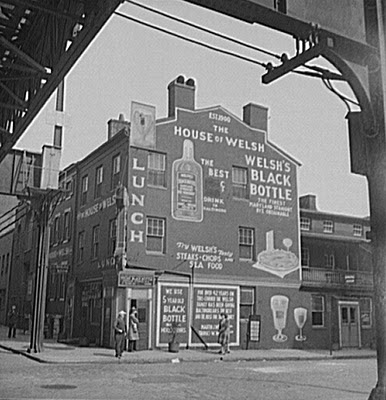Baltimore's Top Transit Missed Opportunities
 |
| Baltimore Sun map from 1930s |
- The Streetcar Subway: In the 1920s Baltimore floated the idea of burying its streetcar lines under downtown with a loop underneath Fayette and Baltimore Street. Streetcar lines along Pennsylvania Ave, St. Paul Street, and Gay Street would have funneled into tunnels at North Ave with lines from the west going into a tunnel under Baltimore Street, from the east under Eastern Ave along Patterson Park and through Fells Point, from the south under Hanover street through Federal Hill. This would have created a very extensive subway system in central Baltimore, and would have in all likelihood, like Boston, SF, and Philadelphia saved much of the streetcar network. If this scenario had played out, places like Penn Station, Patterson Park, and the northeast would have been a quick underground trolley ride away from downtown.
- Metro Subway to BWI: The original plan for the for the Baltimore metro called for a spoke-and-wheel system very much like the DC Metro, but that never happened. However the original Phase 1 plan was to have a metro line from Charles Center south through the Inner Harbor, Ledenhall and then along the old WB&A Electric Railway and Baltimore and Annapolis Railway rights-of-way to BWI and Glen Burnie. However, Ann Arundel County balked when it came to funding and construction, and this southern line was never built, as metro. It would be resurrected as the southern portion of the Light Rail in 1992, however with separate spurs for BWI and Glen Burnie, instead of a direct connection to both, leaving BWI with unacceptably long headways of 20 min. peak/30 min. off-peak. See Roads to the Future for more details.
- Metro Extension beyond Johns Hopkins Hospital: The original 2002 plan called for a metro extension all the way to White Marsh, but a more realistic plan was to serve Morgan State University. However, this was then truncated back to North Ave when plans for the Red Line became finalized. Now however, an extension beyond JHH seems completely unlikely. Gerald Neily has pushed an idea to extend the metro instead beyond JHH, under Eager Street and along the Amtrak ROW to Bayview. With a MARC station at Bayview this would provide a one-seat side from Bayview, to JHH, and Charles Center while using existing infrastructure. Additionally this plan would allow for only one MARC station to be built. The current MTA plan envisions two: one at Bayview to connect with the Red Line, and then one at Broadway to connect with the metro subway. An extension to North Ave would allow for a better location for a bus transfer hub where northeast routes could be funneled into meet the subway.
- Building the Red Line has a spur of the Metro Subway: IMO this is the biggest miss opportunity of them all. While it would not have been as extensive as the plan, a metro Red Line could have been envisioned as a spur using the existing Route 40 right-of-way to West Baltimore, a transfer hub at Lexington Market, and then an extension beyond JHH as mentioned above. For far less money, a more integrated system could have been created. further stages could have expanded the lines further west or north/east. New tunnels would be only needed to connect the spur north of Lexington Market, and approx. 1 mile to North Ave or 1.5 miles to extend the line to the Amtrak ROW to Bayview.
- Pursuing the 2002 rail plan for the MARC Penn and Camden Lines: This is another big miss because it would have utilized already existing MARC system to serve as the backbone to a Baltimore-centric rail line. The 2002 plan envisioned the Purple Line to use the Penn Line between Edgwood and Odenton, but added new stations Rossville, Rosedale, Edison Highway, Sandtown, and at the city line north of Arbutus. The Orange Line would use the Camden Line between Camden Station and Dorsey with new stations at Morrell Park and Lansdowne, although and Elkridge station would also work here. These two lines would be designed to get commuters and riders to Baltimore, with more frequent service and weekend service utilizing multiple-unit trainsets. While the rights-of-way and many stations are there, work would need to be done on the Camden Line to add tracks to accommodate more passenger service.



Comments
Post a Comment